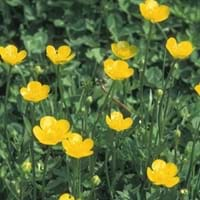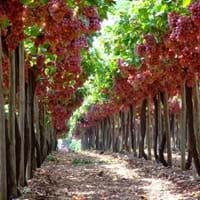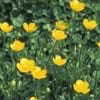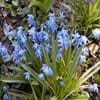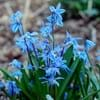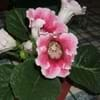Life Span
Perennial
Annual and Perennial
Type
Bulb or Corm or Tuber
Fruit
Origin
Hybrid origin
Hybrid origin
Types
Not available
not available
Habitat
Banks, meadows, Roadsides, Shores of rivers or lakes
Terrestrial
USDA Hardiness Zone
Not Available
5-8
Sunset Zone
21,22
1a, 1b, 2a, 2b, 3a, 3b, 4, 5, 6, 7, 8, 9, 14, 15, 16, 17, 18, 19, 20, 21, 22, 23, 24
Habit
Clump-Forming
Vining/Climbing
Minimum Width
Not Available
Flower Color
White, Yellow, Red, Green
White
Flower Color Modifier
Bicolor
Bicolor
Fruit Color
Not Available
Dark Red, Violet
Leaf Color in Spring
Not Available
Green
Leaf Color in Summer
Light Green
Green
Leaf Color in Fall
Several shades of Green
Orange, Gold, Bronze
Leaf Color in Winter
Light Green
Light Green
Leaf Shape
Lobed and toothed
Irregular
Plant Season
Spring, Summer, Winter
Spring, Summer, Fall
Sunlight
Full Sun
Full Sun, Partial Sun
Type of Soil
Loam
Clay, Loam, Sand
The pH of Soil
Acidic, Neutral
Acidic, Neutral, Alkaline
Soil Drainage
Well drained
Well drained
Bloom Time
Not Available
Late Spring, Early Summer, Summer
Tolerances
Variety of soil types
Drought
Where to Plant?
Ground
Container, Ground
How to Plant?
Divison, Seedlings
Seedlings, Transplanting
Plant Maintenance
Low
Medium
Watering Requirements
Average Water Needs
Water occasionally
In Summer
Lots of watering
Less Watering
In Spring
Moderate
Adequately
In Winter
Average Water
Ample Water
Soil pH
Acidic, Neutral
Acidic, Neutral, Alkaline
Soil Type
Loam
Clay, Loam, Sand
Soil Drainage Capacity
Well drained
Well drained
Sun Exposure
Full Sun
Full Sun, Partial Sun
Pruning
Remove damaged leaves, Remove dead branches, Remove dead flowers, Remove dead leaves
Remove damaged leaves, Remove dead branches, Remove dead leaves
Fertilizers
All-Purpose Liquid Fertilizer
All-Purpose Liquid Fertilizer
Pests and Diseases
Powdery mildew
Red blotch
Plant Tolerance
Variety of soil types
Drought
Flowers
Showy
Insignificant
Flower Petal Number
Not Available
Single
Foliage Texture
Not Available
Coarse
Foliage Sheen
Not Available
Glossy
Attracts
Butterflies
Not Available
Allergy
Pollen
no allergic reactions
Aesthetic Uses
Beautification, Cottage Garden, Ground Cover, Landscape Designing, Showy Purposes
Decorating walls, Showy Purposes
Beauty Benefits
Not Available
used as a dye
Environmental Uses
Air purification
Air purification, soil erosion prevension on hill slopes
Medicinal Uses
Anodyne, Arthritis, Bronchitis, Nerve pain
Diarrhea, Fever, Headache, Hepatitis, Rheumatism, Stomach pain, Urinary tract problems
Part of Plant Used
Flowers, Leaves
Fruits, Leaves
Other Uses
Used as Ornamental plant
Used for producing cooking oil
Used As Indoor Plant
No
No
Used As Outdoor Plant
Yes
Yes
Garden Design
Bedding Plant, Container, Cutflower, Mixed Border
Edible, Fruit / Fruit Tree, Vine
Botanical Name
Ranunculus acris
VITIS labrusca 'Fragola'
Common Name
Ranunculus, meadow buttercup, tall buttercup, common buttercup, giant buttercup
Fox Grape, Red Grape
In Hindi
Ranunculus
लाल अंगूर
In German
Ranunkel
Rote Trauben
In French
Ranunculus
Raisin rouge
In Spanish
ranúnculo
Uvas rojas
In Greek
Ranunculus
κόκκινα σταφύλια
In Portuguese
Ranogkylos
Uvas vermelhas
In Polish
Ranogkylos
czerwone winogrona
Phylum
Magnoliophyta
Magnoliophyta
Class
Magnoliopsida
Magnoliopsida
Order
Ranunculales
Rhamnales
Family
Ranunculaceae
Vitaceae
Clade
Angiosperms, Eudicots
Angiosperms, Eudicots, Rosids
Tribe
Ranunculeae
Not Available
Subfamily
Ranunculoideae
Not Available
Number of Species
Not Available
Difference Between Ranunculus and Red Grapes
If you are confused whether Ranunculus or Red Grapes are same, here are some features about those plants to help you choose better. Many people think that these two plants have the same characteristics, but one can see Ranunculus and Red Grapes Information and learn more about it. Fertilizers required for proper growth of Ranunculus are All-Purpose Liquid Fertilizer, whereas for Red Grapes fertilizers required are All-Purpose Liquid Fertilizer. Hence, one should know the basic difference between Ranunculus and Red Grapes if you are planning to have them in your garden to enhance its beauty.
<
Flowering PlantsImportance of Ranunculus and Red Grapes
Want to have the most appropriate plant for your garden? You might want to know the importance of Ranunculus and Red Grapes. Basically, these two plants vary in many aspects. Compare Ranunculus and Red Grapes as they differ in many characteristics such as their life, care, benefits, facts, etc. Every gardener must at least have the slightest clue about the plants he wants to plant in his garden. Compare their benefits, which differ in many ways like facts and uses. The medicinal use of Ranunculus is Anodyne, Arthritis, Bronchitis and Nerve pain whereas of Red Grapes is Diarrhea, Fever, Headache, Hepatitis, Rheumatism, Stomach pain and Urinary tract problems. Ranunculus has beauty benefits as follows: Not Available while Red Grapes has beauty benefits as follows: Not Available.
Compare Facts of Ranunculus vs Red Grapes
How to choose the best garden plant for your garden depending upon its facts? Here garden plant comparison will help you to solve this query. Compare the facts of Ranunculus vs Red Grapes and know which one to choose. As garden plants have benefits and other uses, allergy is also a major drawback of plants for some people. Allergic reactions of Ranunculus are Pollen whereas of Red Grapes have no allergic reactions respectively. Having a fruit bearing plant in your garden can be a plus point of your garden. Ranunculus has no showy fruits and Red Grapes has showy fruits. Also Ranunculus is not flowering and Red Grapes is not flowering . You can compare Ranunculus and Red Grapes facts and facts of other plants too.
